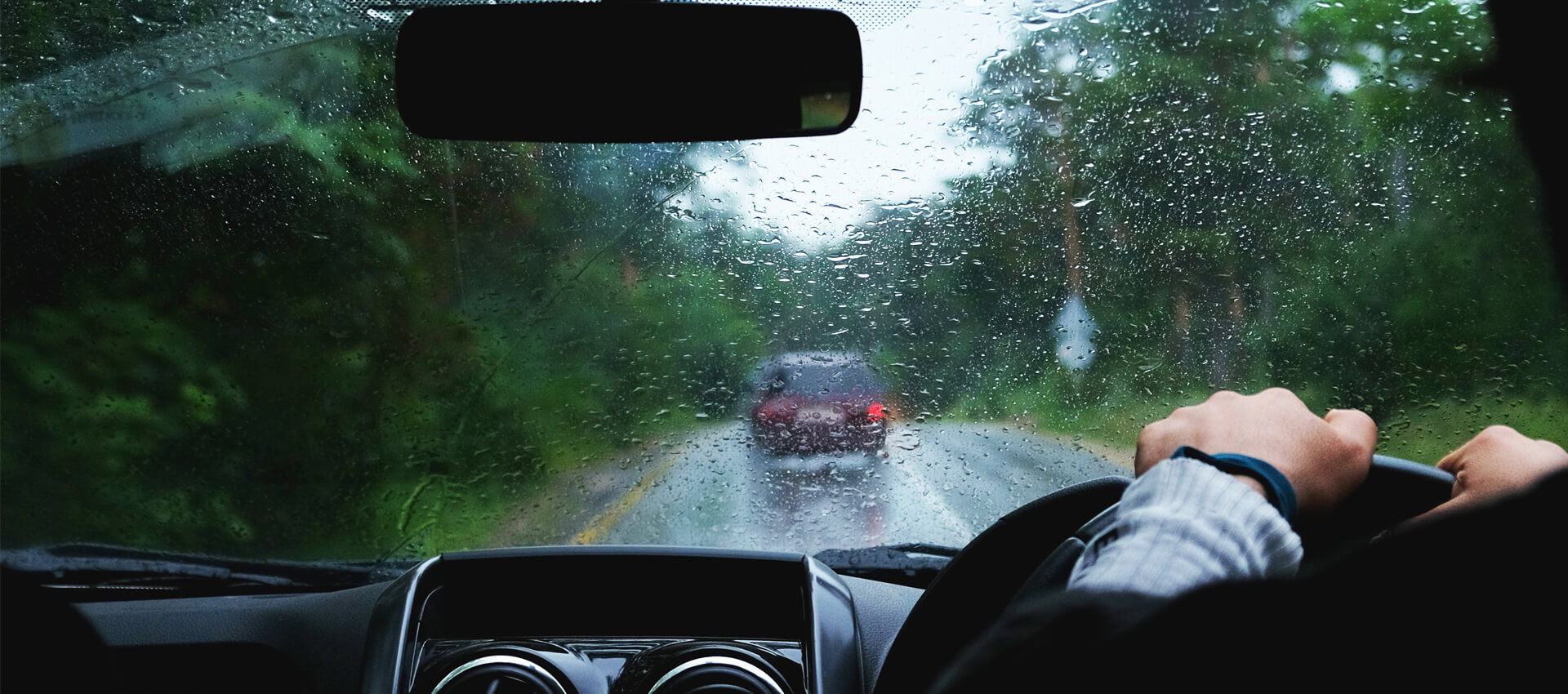Driving in the rain

Why you should take extra care when driving in the rain – it may just save your life
It pays to take special care when driving in the rain to ensure you complete your journey without serious injury!
There are many reasons to take extra care, including:
- Stopping distances are increased due to wet road surfaces.
- Water on your windscreen makes other vehicles, road signs, pedestrians and the road more difficult to see.
- Puddles can form on the road surface and if you’re not careful, you could be at risk of aquaplaning.
Top Tips For Staying Safe When Driving In The Rain
- Set your heater controls – Before you set off on your journey make sure you have set your heater controls as rain makes the windows mist up in seconds.
- Don’t follow other vehicles, particularly large lorries or buses too closely. The spray created by other vehicles’ tyres makes it more difficult for you to see. The same applies when overtaking – if you must do so, complete your manoeuvre quickly and safely.
- Be especially careful when braking as this can cause aquaplaning. If it is safe and possible to do so take your foot off the accelerator to slow down.
- Avoid using cruise control, as this may create problems if you start to aquaplane.
- Turn on your headlights, particularly if the rain is coupled with gloomy, foggy or overcast conditions. As well as helping you to see the road, it makes you more visible to other drivers.
- Don’t drive through puddles if you’re unsure of their depth. You could become stuck or damage your car.
- Never drive through moving water if you can’t see the ground beneath. This could result in you being swept away!!
- Strong winds can also cause unsteadiness on the road. Make sure you grip your steering wheel firmly and be especially aware of other vulnerable road users such as motorcyclists and flat-sided vehicles.
- If you begin a journey in the rain, try to wipe your feet on your car mat before starting to drive – the soles of your shoes could slip off the pedals if they’re wet.
- Take extra care at junctions. Fuel leakage most often occurs here and when mixed in with rainwater, is a serious skid danger.
- If you drive through a water hazard, you must check your brakes afterwards. If they’re wet through, they won’t work correctly. Once you’ve driven out of the water, drive very slowly and touch your brakes lightly. This will both test them and help to generate the heat necessary to dry them out. Make sure your brakes are pulling evenly before driving at normal speed again.

What Happens When Driving In The Rain Leads To Flooded Roads?
In cases of severe flooding, you should reconsider making the journey at all. If it is absolutely unavoidable, and you have to drive through deep water, the IAMRoadsmart charity recommends drivers take the following precautions:
- Drive on the highest section of the road and don’t set off if a vehicle is approaching you.
- Leave time and space to avoid swamping other cars and pedestrians.
- If you can’t see where you are going to come out of the water, such as when approaching flooding on a bend, think twice about starting to drive into it.
- In deep water never take your foot off the accelerator, as this could allow water to travel up the exhaust pipe.
- Once you’re out of the water, dry the brakes before you need them. The best way is to lightly apply the brake as you drive along for a few seconds, after checking nothing is following you too closely.
Checks When Driving In The Rain:
- Make sure you check your wipers regularly. Old and/or brittle wipers won’t clear your windscreen effectively which will seriously affect your visibility.
- Make sure all the lights on your car, including fog lights and reverse light are in working order.
- Check your tyres. Bald tyres severely reduce your grip on the road; bad news in decent driving conditions, even worse in poor weather.
What Do I Do If My Vehicle Starts Aquaplaning Whilst Driving In The Rain?
- Don’t brake.
- Don’t turn your steering wheel.
- Slow down by easing your foot off the accelerator.
Read our blog about ‘Electronic stability control (ESC) questions in the Theory Test‘ which contains sensible guidance on how to manage skids.


